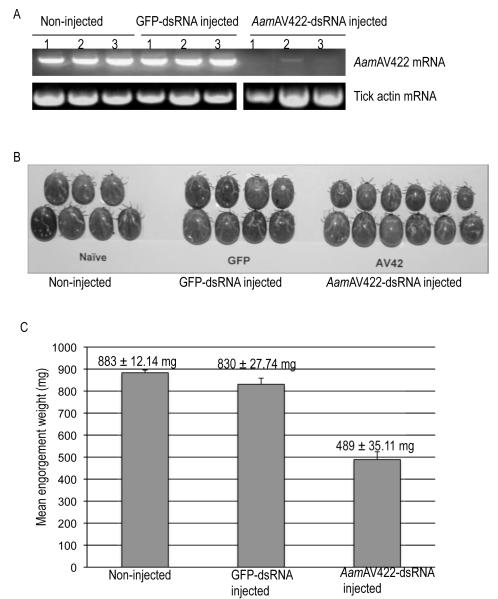Fig. 9.
Validating the significance of Amblyomma americanum AamAV422 protein in tick feeding success. (A) Validating the disruption of AamAV422 mRNA in AamAV422-double stranded (ds) RNA injected ticks. Approximately 25-30 ticks were microinjected with 0.5-1 μL (2-3 μg/μL) of AamAV422 or GFP (control) dsRNA in Tris-EDTA buffer. At 48 h post-attachment, three ticks per treatment, non-injected and GFP-dsRNA injected control ticks, together with the AamAV422-dsRNA injected ticks, were manually detached. Ticks were individually processed for total RNA extraction, DNase treated to eliminate genomic DNA contamination and then subjected to two-step reverse transcriptase (RT)-PCR using AamAV422 PCR primers. Equivalent amounts, ~15 μL of PCR products, were resolved on 2% agarose gels containing 1 μg/ml of ethidium bromide. (B) Physical phenotype of AamAV422-dsRNA injected ticks. Ticks were photographed after spontaneous detachment. (C) Effect of RNA interference (RNAi)-mediated silencing of the AamAV422 mRNA disruption on Amblyomma americanum female tick feeding success. After spontaneously detaching from the host, ticks were individually weighed to determine engorgement weights (EWs) as indices for amounts of blood imbibed by ticks. EWs were subjected to one-way ANOVA as described in Section 2.9 to determine statistical significance. Mean (M) EWs (MEW ± S.D.) were plotted as bar graphs. *, significant differences in MEWs between AamAV422-dsRNA injected ticks and both control groups. P < 0.0001.

